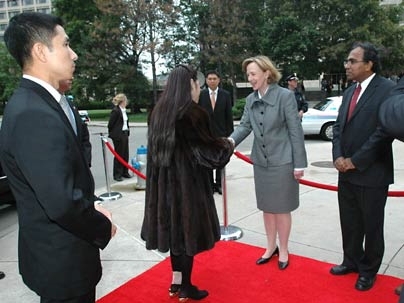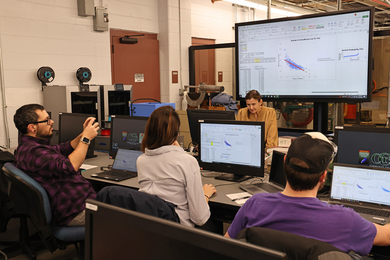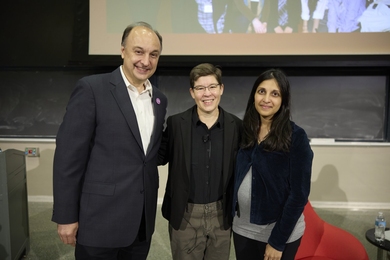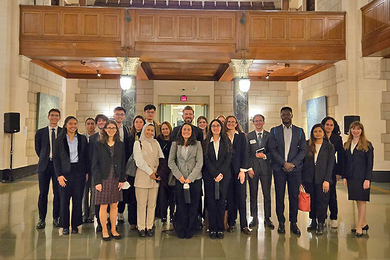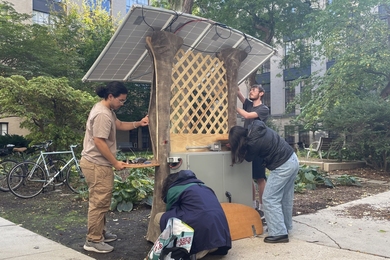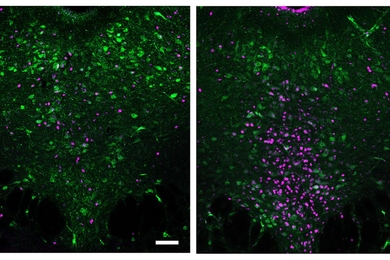In a launch Oct. 12 worthy of its sparkling acronym, the Global Enterprise for Micro-Mechanics and Molecular Medicine, or GEM4, brought to MIT people from 12 time zones away, many university presidents, leaders of government, and royalty: Professor Dr. Her Royal Highness Princess Chulabhorn Mahidol of Thailand.
Through GEM4, scientists, engineers and health professionals from around the world will work together on such global medical challenges as infectious and cardiovascular diseases, cancer and environmental health. The uniqueness of the initiative lies in its vision of fostering a global engagement among colleagues to promote novel modes of interactions that cannot be established by conventional multi-institutional arrangements.
"Our idea is to bring top researchers together across time zones and disciplinary boundaries, seamlessly and frequently," said Subra Suresh, director of GEM4, Ford Professor of Engineering and head of MIT's Department of Materials Science and Engineering,
Princess Chulabhorn Mahidol, a scientist herself, is founding president of the Chulabhorn Research Institute (CRI) in Thailand. At the launch, she said she was pleased to offer the infrastructure of CRI to GEM4, part of the global sharing of facilities key to the initiative.
In her remarks, she also noted the history between MIT and her country that ultimately led to Thai involvement in GEM4.
That history began almost 40 years ago with research by MIT Professors Gerald N. Wogan and the late George H. Buchi (Wogan, professor emeritus of biological engineering, attended the GEM4 launch). Working with colleagues at Thailand's Mahidol University, the two showed that a toxin present in contaminated food was the principal cause of liver cancer in Thailand. Since then, additional studies by researchers from MIT and Johns Hopkins University have led to ways to prevent the disease.
In his remarks, Suresh described GEM4's importance. "In a flat world where institutional, cultural and national barriers are fast disappearing and where instant communication around the clock is bringing people together in unprecedented ways, the infrastructure of GEM4 will be an engine that drives collaborations across disciplinary boundaries with potential for sweeping societal impact on a global scale."
In addressing major health issues, GEM4 will focus initially on nanomechanics in biomedicine and environmental health. These are areas in which a single investigator, institution or region of the world is not likely to have the necessary spectrum of expertise, infrastructure or resources to produce a beneficial global effect.
And as MIT President Susan Hockfield noted in her remarks, "when many institutions work together, the results are significantly more than the sum of their parts."
Other speakers at the launch were President C. Fong Shih of the National University of Singapore, who congratulated MIT and Suresh for visionary leadership; Chancellor Richard Herman of the University of Illinois at Urbana-Champaign; Professor Judah Folkman of Harvard Medical School; and MIT Institute Professor Robert Langer.
In addition to Suresh, John Essigmann and Ram Sasisekharan, professors in MIT's Biological Engineering Division, were among those who played key roles in formulating the GEM4 paradigm, along with senior administrators and faculty from MIT and other participating institutions.

